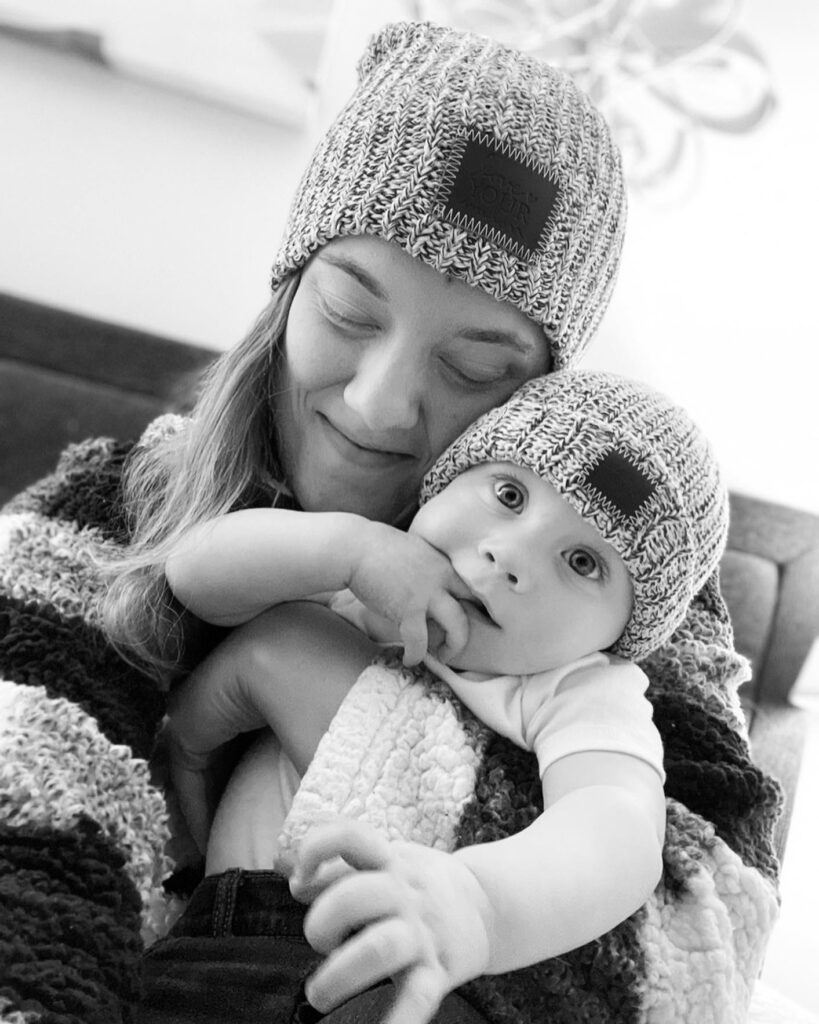In August of 2021, my husband and I welcomed our firstborn child into the world. Leading up to his grand entry, we had thoroughly planned for long nights of waking, hundreds of dirty diapers, and the constant parade of bottle parts through our dishwasher. We were excited, and we were prepared.
What we did not plan or prepare for was the phone call we would get just 5 months later, after I had visited the neurologist for recurring right-sided numbness. We did not plan for the tally mark list of scans I started to keep in my phone: 8 MRIs, 4 CTs, 2 MRAs, 1 PET, 1 fMRI. We did not plan for the days spent sitting in medical offices, getting blood draws, and the really big words we would have thrown at us. We did not plan for a craniotomy, seizures, memory loss, language dysfunction, and a million other nasty effects that come as a reality of having a brain tumor.
That is the problem with a brain tumor diagnosis: you cannot plan for it. It hits you like a hard punch to the gut, knocking the air out of your lungs and leaving you scrambling desperately to pick up the pieces. It felt to me like watching a train rumbling toward me at full speed and knowing hopelessly that absolutely nothing I could do would stop it. I was 26 at the time of my diagnosis. I was confused, broken, horrified. How could this possibly happen to a new mother, a young wife, a newly-established professional?
In February of 2022, a craniotomy was performed to remove the mass from my left temporal lobe. The clinical diagnosis of my brain tumor was a grueling, 3 month long process that involved passing my neural tissue through the hands of multiple professionals, ultimately resulting in a mixed and uncertain result. It was in those days of waiting and waiting that I had to come to terms with the “new” me — remnants of what trauma had left behind.
The new me was anxious and guarded — triggered by the smell of an alcohol wipe or the beeping of a machine. The new me would not (and will not) stray too far from my seizure rescue medication in the event those familiar sensations should arise again. The new me battles every single day with the theory of “what if?” What if the tumor comes back? What if my memory never fully recovers? What if the lack of a firm diagnosis means I can never truly understand what is wrong with my body?
My tumor was initially diagnosed as a grade III anaplastic astrocytoma. I could never really explain how small I felt being 26 years old, lying in bed with my husband while our 5 month old baby slept nearby, having the discussion of what we were going to do if I did not make it. After a variety of send out testing, the prognosis swung in my favor. My tumor was ultimately diagnosed as a WHO grade I-II glial tumor with mixed features of a pleomorphic xanthoastrocytoma, pilocytic astrocytoma, and ganglioglioma. In other words: it did not match the diagnostic/genetic criteria of any one tumor type, making its odds of recurrence and future of treatment fully open-ended.
Ultimately, I am one of the lucky ones. I am one of the lucky ones who has the privilege to take a “wait-and-see” approach. Every four months I have to return to our local cancer center to get an MRI of my brain and meet with neuro-oncology. I still have to take anti-convulsants that affect my executive functioning and mood. But I am also ALIVE.
Since my diagnosis, genuine, abundant life has been lived. My husband and I have bought a house. We took a trip to the coast. I have watched my little, tiny baby transform into a bold, exciting, and lovably-defiant toddler. I have resumed my job as a pediatric occupational therapist. Though the idea of a returning tumor looms in my mind, I am free to embrace life as it comes and take each season in stride.
The lifetime risk for being diagnosed with a brain tumor is approximately 1%. That means 99% of the world’s population will never understand what it is like to experience having one. So for that 99%, there are a few things you should know about having a brain tumor:
First and foremost, it changes you. It changes everything. It alters your physical functioning, your emotional well-being, your day to day routine. It infiltrates and infects every fiber woven into the story of your life. Secondly, it changes those around you. Family, friends, co-workers, and beyond felt the ripple effect of what I went through and left lasting imprints on those closest to me. Lastly and most importantly, this community not only asks for, but requires greater research and louder voices of activism. I have no idea what my future may hold because my tumor type could not be clearly diagnosed, even by our nation’s leading professionals. But often, when I think of research, I do not think of myself. I think of my own uncle, who died in his 50s from a glioblastoma. I think of multiple children whose stories I have followed that lost their lives before they even began secondary to an untreatable brain tumor. Those of us existing in this little 1% bubble are pleading for your help to improve screenings, treatment options, and research so that when that rumbling “brain tumor” train comes plummeting towards another person or family, there is greater hope of diverting it onto another track.
And to my fellows in the 1%: I know you did not prepare for your diagnosis. I know you did not plan for this to be written into your story. None of us do. But no matter what…keep going. It is a battle worth fighting.



